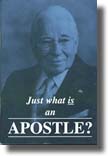WASHINGTON/ CHICAGO - The U.S. Federal Reserve is taking a risk by opening up its own balance sheet to the same poisonous securities that have strained banks to the limit. But the risk of doing nothing is far greater.
USA - Markets from New York to Tokyo have recorded heavy losses in reaction to the emergency bailout of US investment bank Bear Stearns over the weekend.
USA - The most powerful economic force in the world right now is what bankers call "DELEVERAGING". It's the process, currently under way with a vengeance, of BANKS AND FINANCIAL INSTITUTIONS ASKING FOR THEIR LOANS BACK, especially from borrowers perceived as high risk.
USA - The dollar tumbled and stock markets were left reeling after the Federal Reserve unveiled new measures designed to prevent a meltdown in global financial markets and Bear Stearns was sold at a knockdown price.
EU - Food chiefs have rejected calls to ban additives which trigger hyperactive behaviour in children. The decision has appalled UK campaigners who insist millions of youngsters will be left exposed to harm.
VATICAN CITY - Pope Benedict XVI denounced the 5-year-old Iraqi war and issued one of his strongest appeals for peace in the country Sunday, days after the kidnapped Chaldean Catholic archbishop of Mosul was found dead.
HONG KONG - Flu alerts have been raised after the unexplained deaths of four young children with flu-like symptoms. Worried residents are donning surgical masks, flooding hospital waiting rooms and buying up supplies of antibacterial soap as they remember the SARS outbreak that killed 299 people five years ago.
USA - It's called the dead zone. Agricultural fertilizer byproducts like nitrogen are running off farms and into the Mississippi River, which then spills out into the Gulf of Mexico.
USA - On Thursday, Justice Department Inspector General Glenn Fine released a report documenting continuing misuse of Patriot Act powers by the FBI. And to judge from the reaction in the country, nobody cares.
TEHRAN - Conservatives won a majority in Iran's parliamentary vote, state television said on Sunday, but the new assembly may still give President Mahmoud Ahmadinejad a tougher time ahead of next year's presidential election.
USA - Federal Reserve Chairman Ben S. Bernanke is being forced to throw out four decades of monetary history by a financial system choking on miscalculated risks and a deepening recession.
USA - Ivan Stalzer said, "Guarantee lenders against failure and they will lend and lend and lend!"
LONDON - The Mail on Sunday has been told by senior Royal sources that the Queen was angered by last week's controversial Government-commissioned report, which recommended school leavers should pledge an oath of allegiance - but not necessarily to the Monarch.
LONDON - Labour was accused of "petty parliamentary vandalism" last night over a decision to strip Black Rod, the personal attendant of the Queen in the Lords, of his historic powers.
USA - The upcoming week will be full of a lot of important data, shortened by Friday's holiday, but it will all take a backseat to Tuesday's meeting of the Federal Open Market Committee.
Disclaimer:
The views expressed in this section are not our own, unless specifically stated, but are provided to highlight what may prove to be prophetically relevant material appearing in the media.


